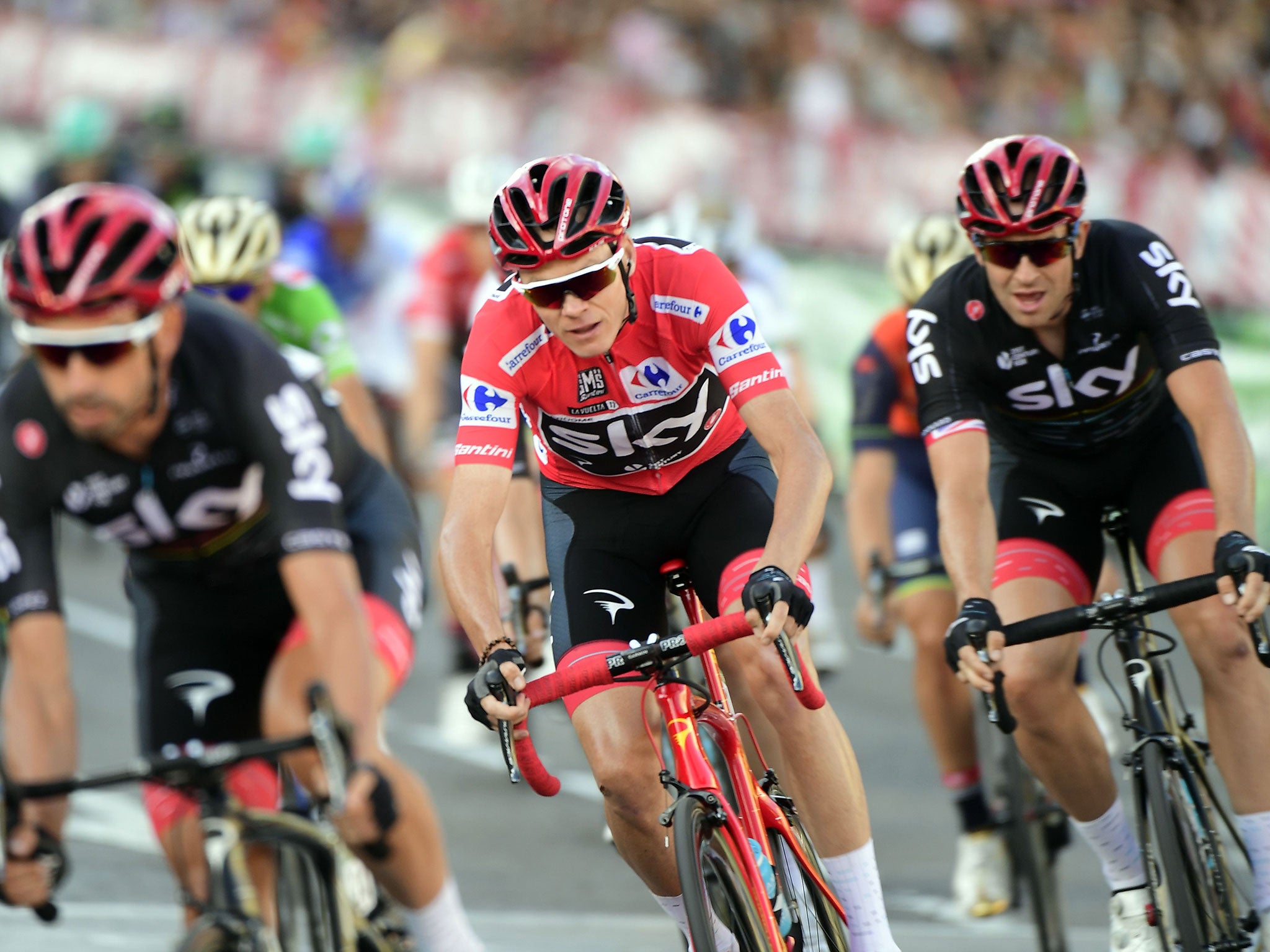Salbutamol: What is the drug Chris Froome took to treat his asthma that could lead to Tour de France ban?
Four-time Tour de France winner is fighting to save his reputation after returning a drugs test with twice the permitted level of Salbutamol

Your support helps us to tell the story
From reproductive rights to climate change to Big Tech, The Independent is on the ground when the story is developing. Whether it's investigating the financials of Elon Musk's pro-Trump PAC or producing our latest documentary, 'The A Word', which shines a light on the American women fighting for reproductive rights, we know how important it is to parse out the facts from the messaging.
At such a critical moment in US history, we need reporters on the ground. Your donation allows us to keep sending journalists to speak to both sides of the story.
The Independent is trusted by Americans across the entire political spectrum. And unlike many other quality news outlets, we choose not to lock Americans out of our reporting and analysis with paywalls. We believe quality journalism should be available to everyone, paid for by those who can afford it.
Your support makes all the difference.Chris Froome was been asked to explain why he provided a urine sample result with twice the allowed limit of Salbutamol, a drug used to treat asthma, during this year’s Vuelta a Espana that could lead to a lengthy ban if the four-time Tour de France winner is unable to give an sufficient explanation.
Froome, Team Sky and the Union Cycliste Internationale [UCI] issued statements on Wednesday addressing an abnormal drugs test given by Froome following stage 18 of La Vuelta that is a potential anti-doping violation.
The revelation leaves Froome fighting for his reputation, and if he is unable to challenge the result or provide a reason for the abnormal test result, he faces being banned for next year’s Tour de France and Giro d’Italia.
So what is Salbutamol and how can it affect an athlete?
Salbutamol is a substance that is inhaled through the use of an inhaler to relieve symptoms of asthma and other lung conditions such as coughing, wheezing, a tight chest and feeling breathless. It relaxes the muscles of the airways into the lungs, widening the airways and making it easier to breathe.
Salbutamol can also be taken via ingestion through a tablet, capsule or syrup, but it is only available on prescription. It can be taken by adults and children of all ages, and is a type of ‘reliever’ inhaler that provides quick relief rather than a long-term solution.
The World Anti-Doping Agency [Wada] permits without the need for a Therapeutic Usage Exemption [TUE] as long as it’s limited to inhaling 1,600 micrograms over a period of 24 hours and no more than 800 micrograms in 12 hours.
So cyclists can take it?
Yes, but only to the above limits. If a urine sample returns a level of more than 1,000 nanograms per millimetre, it will be deemed a potential anti-doping violation unless the cyclist can confirm that they did not take more than the regulated dosage in the specified timescale. Cyclists can also only use Salbutamol through inhalation, and must prove that any Adverse Analytical Finding [AAF] was the consequence of the use of the therapeutic dose up to the maximum allowed.

What next for Froome?
Froome has already agreed to help the UCI after issuing a statement through Team Sky. UCI will investigate the case, and determine whether the 32-year-old has a sufficient explanation for why he had double the threshold of Salbutamol in his system while competing at La Vuelta – along with ensuring that he did not exceed the dosage allowed inside 12 and 24-hour periods.
Froome said: “I take my leadership position in my sport very seriously. The UCI is absolutely right to examine test results and, together with the team, I will provide whatever information it requires.”

Could Froome be banned?
Yes. If the UCI decide to uphold the ruling and Froome either fails or decides not to challenge the test result, a lengthy ban could be issued. Previous cases involving Salbutamol were sufficient explanations were not given have resulted in suspensions. In 2007, Italian cyclist Alessandro Petacchi was banned for 12 months after providing a sample of 1,320ng/ml, while in 2014 another Italian rider in Diego Ilissi was given a nine-month ban for returning a result of 1,920ng/ml – both of which were under Froome’s results.
However, Italian Leonardo Piepoli avoided any ban when reportedly returning levels of salbutamol similar to those by Froome, having successfully explained the reasons for the abnormal test.